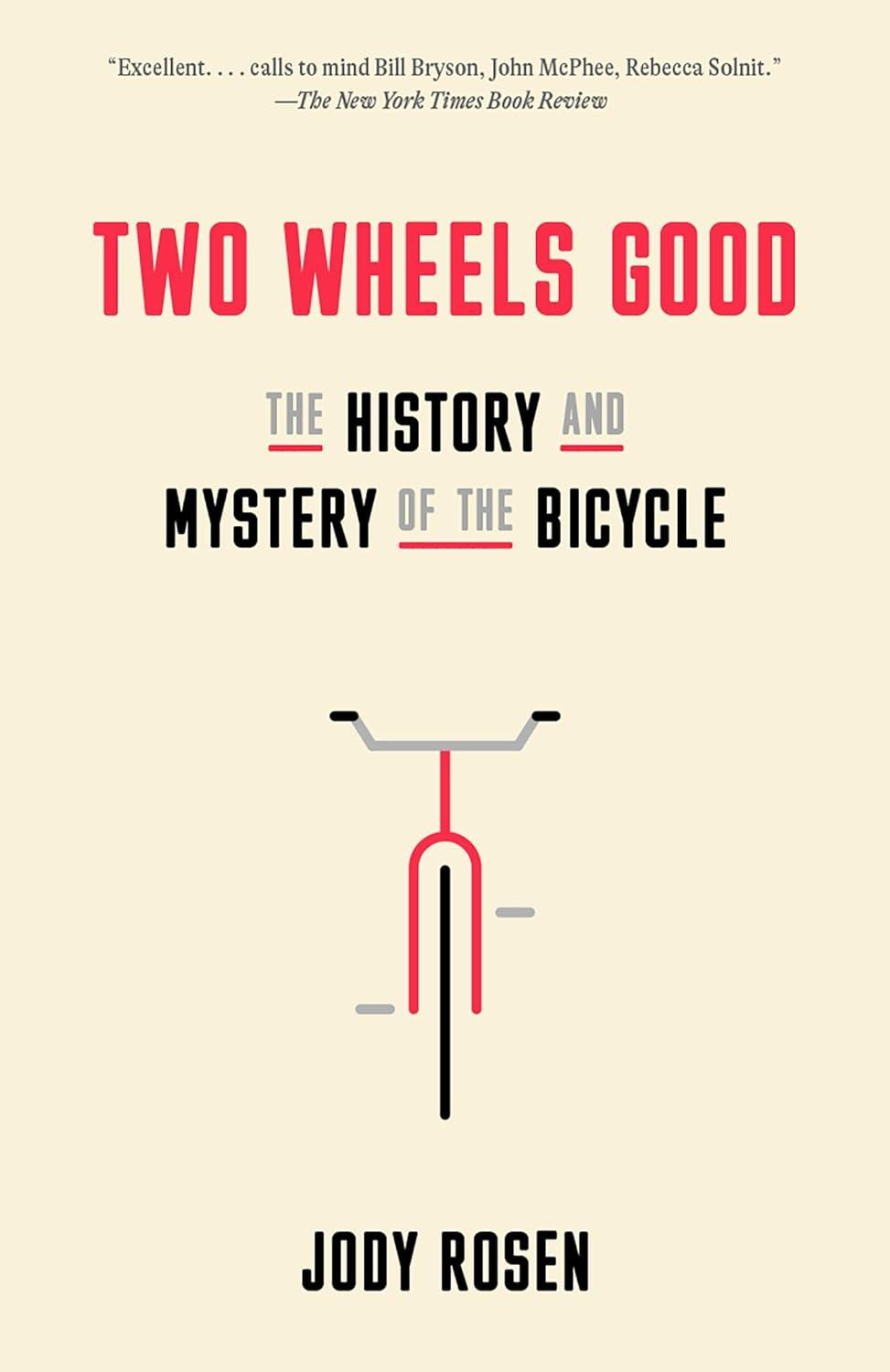I recently got rid of my vintage Raleigh cruiser, a dusky brown survivor with numerous patches of rust that, to my mind, made the 1960s bicycle look more distinguished. The finicky gears weren’t the problem. Nor was it the handbrake cable that frequently jutted straight up like an antenna. What wore me down were the slim tires that routinely got banged up on New York City streets, turning the wheels into dead weights riding on thin scalps of rubber.
Thankfully, since upgrading to a used Fuji BMX, with a black frame and much thicker tires, I’ve been spared that recurring scenario. But memories of my Raleigh came rushing back as I read Jody Rosen’s Two Wheels Good: The History and Mystery of the Bicycle, which opens with colorful descriptions of bicycle ads from the turn of the 20th century: Art Nouveau posters that depict the faddish invention soaring through the air, riding through the clouds, and ascending into the reaches of outer space.
Rosen reminds us that the inventors of the first true flying machine were a pair of bicycle mechanics from North Carolina: Orville and Wilbur Wright. Less known is the story of John Boyd Dunlop from Belfast, who, in 1888, created what was falsely patented as the first rubber tire. Inspired by his son’s complaints about his tricycle, Dunlop contrived a rubber tube filled with compressed air that he affixed to a wooden wheel, a shock-absorbing sleeve that brought more comfort and efficiency and that became the standard for bicycles and, eventually, the automobile. A similar invention, the aerial wheel, had preceded Dunlop’s by almost 50 years, but he reaped the credit. This intersection of myth and reality is a prelude to how much of the book will treat its subject.
Two Wheels Good shifts from tales of enchantment and wild legends to more factual accounts and events grounded in history. The approach is akin to how Rosen, a longtime cyclist himself, describes the act of traveling on two wheels: an experience like “gliding somewhere between terra firma and the huge horizonless sky.” That is a beautiful expression of the book’s ambition, but it also covers a lot of territory. In certain chapters, I did find myself wondering if the book’s appeal would be limited to “bicycle obsessives,” as Rosen calls them, or if his work would charm general audiences in the way that John McPhee, for example, inspires laypeople to read about remote landscapes and geologic history.
